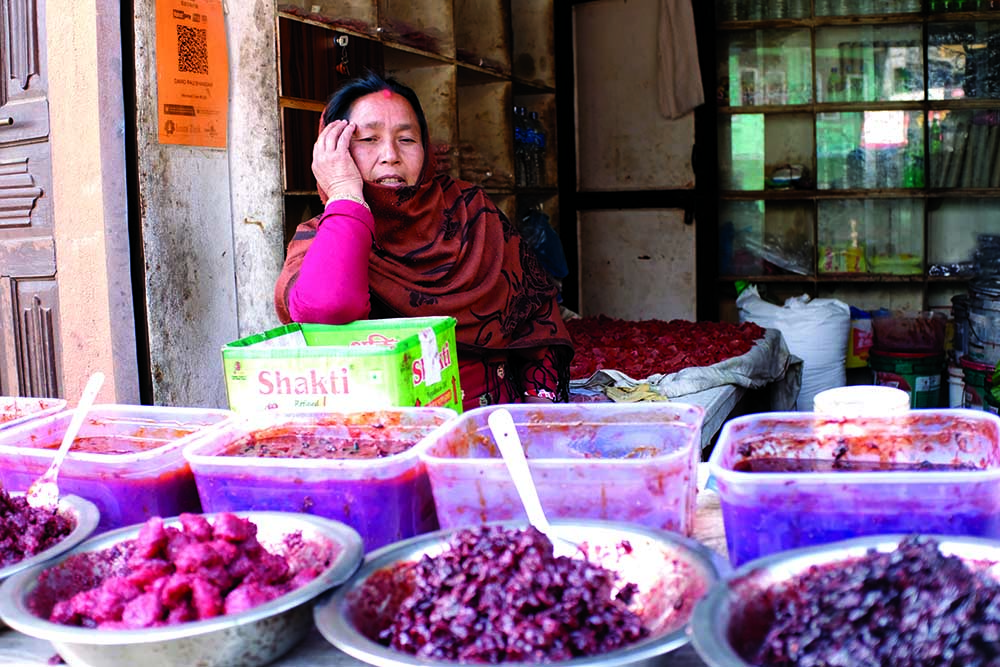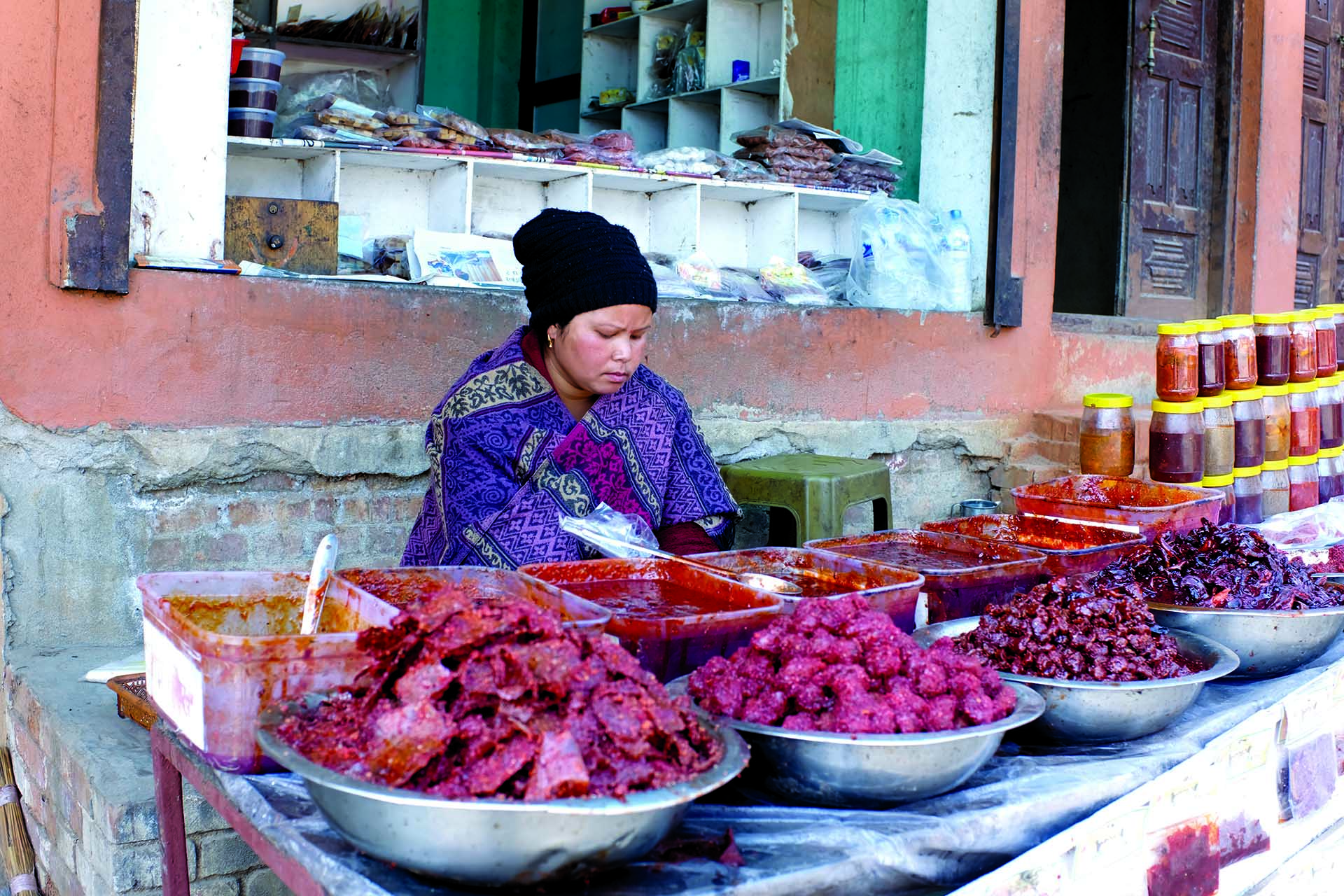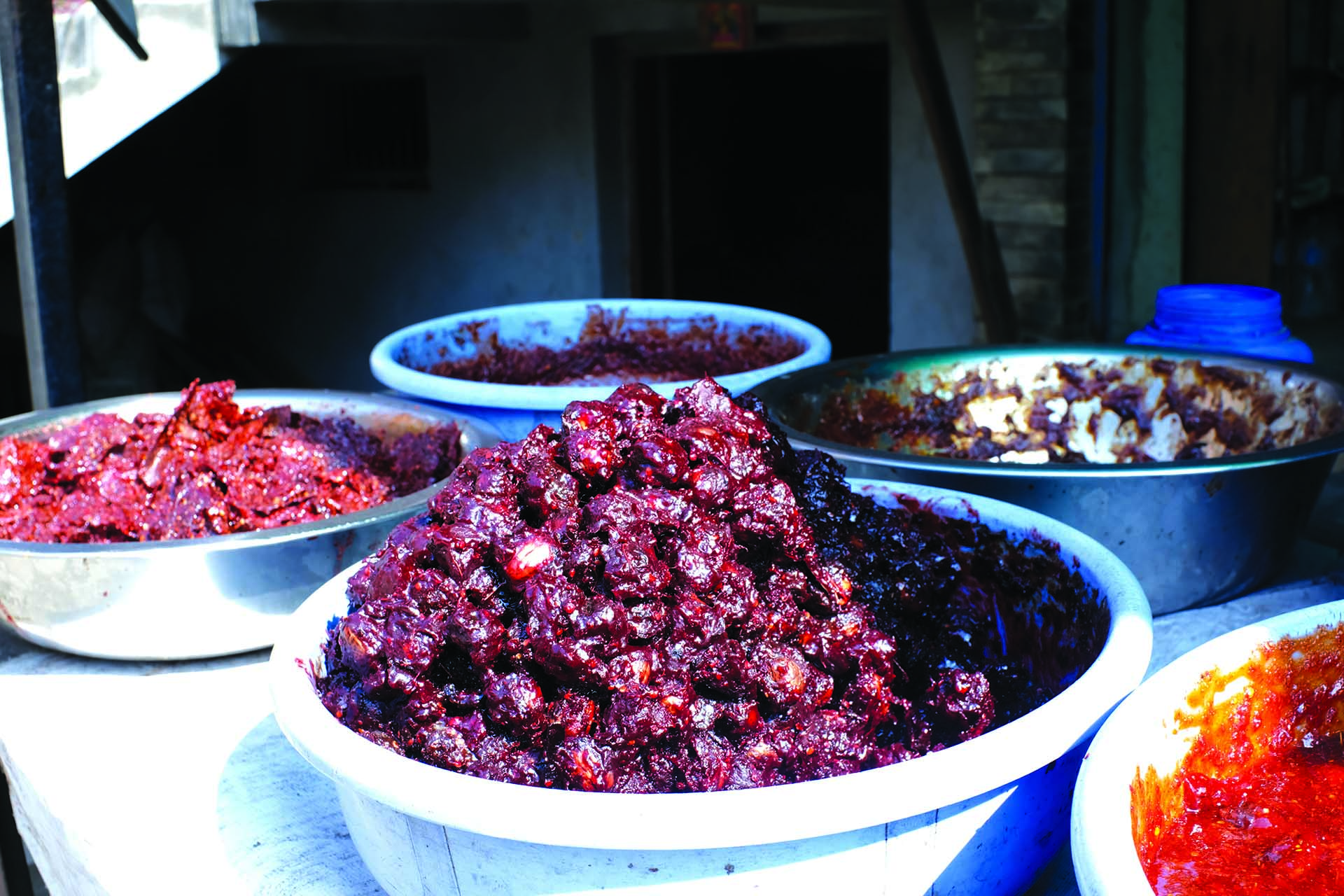SANGA’S LIP-SMACKING CANDIES
I always carry a packet of titaura in my bag. Whenever my mood is off, I open the packet, take one out, and put it in my mouth,” says Rakina Maharjan, 15. “It makes me feel oh-so-good.”APEX had met Maharjan at Sanga, a scenic picnic spot on the outskirts of the valley, on a Saturday. Sanga is famous for a big standing statue of Lord Shiva—and for its many titaura factories and shops.
“I was around 9 or 10 when I first tasted titaura. From that day, I have loved its sour and sweet taste,” says another visitor Anish Sindukar, from Patan. “Now I am 23 and I am still hooked to it.”
A mouth-watering mix of tangy, sweet, sour, salty and hot, titaura or paun is made from lapsi (hog plum fruit). The process is simple: boil lapsi in salt water, take out the seed stones, and mix the gluey flesh with hing and other typical Nepali spices. Add some salt and sugar, and the ingredients of the typical Nepali delicacy is complete. Then you roll it, sun-dry it and cut it into slices. Alternately, you could make candies or a pickle-like mixture—and the titaura is ready to savor. Apart from the traditional lapsi, Nepali entrepreneurs have started making titaura with mango, lemon, and dates as well. Damo Paun Udyog of Sanga is one such venture. Firm owner Sanu Maya Shrestha has been in this business for over 25 years. Initially, she made and sold titaura to dif-ferent shops in the valley. She now has her own wholesale store. “I make a good living from it,” she says. A few steps from her factory is Kumari Paun Udyog, which has been producing lapsi “mada” for the past 30 years. “I consider myself a self-taught and successful entrepreneur,” says factory owner Mohan Kumar Shrestha. If not for his factory Shrestha reckons he would now be toiling somewhere in the Gulf



Sparking new life into public places
If you have been to Durbarmarg, Keshar Mahal, Thapathali or Maitidevi areas in Kathmandu, you may have seen electric poles covered in weaved bamboos resembling our traditional dokos (baskets). This may seem unusual. But says artist Kailash K Shrestha, the project “I’m You” was started with the goal of making our public spaces more interesting and intriguing. In this, he works in collaboration with artisans Chhabi Bahadur Shrestha, Narayan Shrestha and Ganga Bahadur Shrestha.
A native of Dolakha who has been living in Kathmandu for a long time, Shrestha was always confused about his identity. After the 2015 earthquake, he went back to his hometown to discover himself. He recalled carrying doko back in his village and was always mesmerized by its weaving patterns. He says, “Our identity is like doko’s, slowly disappearing in the mist of modernism. I started this project to revive our old traditions and help people recover from the post-quake trauma.”
In our day to day life, seldom do we stop and look around us to see what’s new. The public space no longer seems so public. Shrestha wants people to start noticing things around them again, and using art to bring these public spaces back to life. “People have the misconception that art is limited to drawings, paintings, and sculptures. But this is a false impression,” he says. “Art can be created from anything and everything. From the clothes we wear to the way food is served.”
Shrestha plans is to initiate street art projects all over Nepal, using the medium to reach out to the communities and give them important socio-political messages. “Art has taught me to live a gratifying life, face challenges, and to endlessly experiment,” he says.
Though the artist runs the project single-handedly, he believes he could produce ‘national assets’ even with a little government help.








